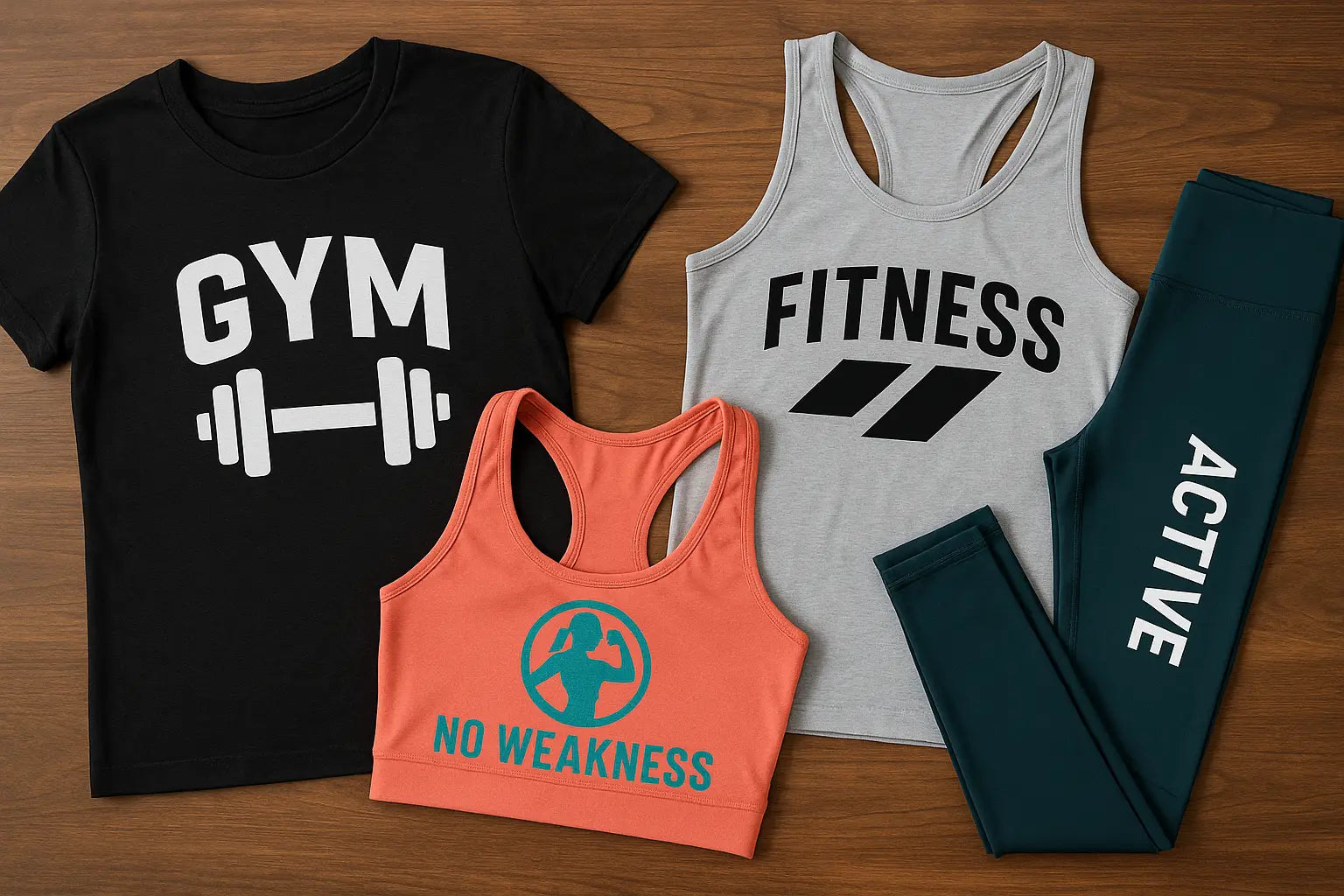From fabric quality to how your brand stands out, every element matters in the cutthroat world of sportswear. DTF printing has emerged as one of the most dependable methods for fitness and sportswear companies to produce comfortable, colorful, and long-lasting designs that consumers like wearing. DTF provides a potent combination of quality and flexibility, whether it's for a national introduction of a high performance line or personalized workout shirts for a neighborhood club.
Let's examine the advantages of this printing technique for fitness wear, potential problems, and optimal outcomes.
Why Fitness Brands Are Switching to DTF Printing
Activewear must withstand perspiration, stretches, and repeated washings. Clothing DTF printing is made to adhere firmly to a variety of textiles while maintaining vibrant colors and designs. Cotton, nylon, and polyester blends, common fabrics in exercise apparel, all respond favorably to it.
Compared to other methods, custom activewear printing with DTF offers:
- Long lasting designs that resist cracking and fading.
- Soft, flexible prints that move with the fabric.
- Full color capability for bold and unique graphics.
For brands selling online through print on demand workout gear services, DTF makes it possible to fulfill orders quickly without stocking large amounts of inventory.
Meeting Performance Demands of Gym Apparel
When customers buy gym apparel, they expect comfort and resilience. That’s why the best printing for gym apparel involves choosing a method that doesn’t compromise on either. With DTF, inks bond to the fibers instead of sitting stiffly on top, which helps maintain the garment’s flexibility.
The technology produces durable prints for fitness wear that can handle high friction movements like running, lifting, or yoga without peeling. For fitness influencers and small brands, this means every printed piece can handle daily wear and tear while still looking new.
Personalization and Brand Identity
Customization is one of DTF's greatest benefits. Branding is made easier by the ability to print in small numbers without sacrificing quality. Whether you're making bespoke fitness apparel printing shirts for a boot camp program or customized gym wear with DTF transfers for a competition.
Because of this versatility, businesses can also experiment with limited-edition designs or seasonal collections to keep customers interested. Adding motivational quotes, team logos, or unique color schemes is simple. DTF's vibrant printing ensure that every small detail is noticed.
How DTF Stacks Up Against Other Printing Methods
Many brands ask, Is DTF good for activewear? Yes, particularly in contrast to vinyl or screen printing. Although screen printing is effective for big quantities, it is less flexible when it comes to intricate color patterns on stretchy materials. Conversely, vinyl may eventually peel when subjected to excessive movement.
DTF satisfies all three requirements for the ideal printing technique for athletic wear: comfort, flexibility, and durability. Plus, it’s cost effective for both small runs and large scale production.
Care Tips for Longer Lasting Prints
Even though DTF prints are tough, proper care can make them last even longer. Here are quick tips:
-
Use cold water for washing.
-
Turn your clothing inside out before washing them.
-
Let it air dry or tumble dry on low.
Brands may guarantee that their athletic wear printing solutions last a lifetime for their customers by following these measures.
Conclusion
For fitness and activewear brands, DTF printing for activewear offers an unbeatable combination of vibrant colors, flexible prints, and long lasting quality. Whether you’re selling custom fitness shirts, personalized fitness shirts, or premium custom gym wear with DTF transfers, this method helps your products stand out in a crowded market.
If you’re ready to upgrade your custom activewear printing process with dependable results, visit DTF West Coast to get started.
FAQs
1. Are gym clothes suitable for DTF printing?
Yes, workout apparel is ideal for DTF printing. It performs admirably on cotton, spandex, and polyester mixes.
2. Can DTF prints withstand perspiration and repeated washings?
Indeed. Even after numerous washing cycles and intense exercise sessions, DTF prints retain their designs and colors when placed properly because they are impervious to moisture and detergents.
3. What is the difference between DTF and screen printing for sportswear?
Screen printing works well for large bulk orders with fewer colors. Whereas DTF printing for clothing gives you more freedom for short runs and complex designs. DTF also bonds better to stretchy fabrics.
4. What fabric works best for DTF printed gym wear?
DTF printing works on most fabrics, but polyester blends and cotton spandex mixes are the most popular for activewear because they balance comfort, breathability, and durability for fitness activities.
5. Can I create personalized gym wear with DTF printing?
Yes, DTF printing allows you to print custom names, logos, and designs in small quantities, making it perfect for personalized gym wear, fitness events, and branded athletic collections.



Share:
Why Your DTF Colors Don’t Match Your Screen - Color Correction Tips
Customize Your Design with UV DTF Transfers by Size, Exact Fit for Any Project